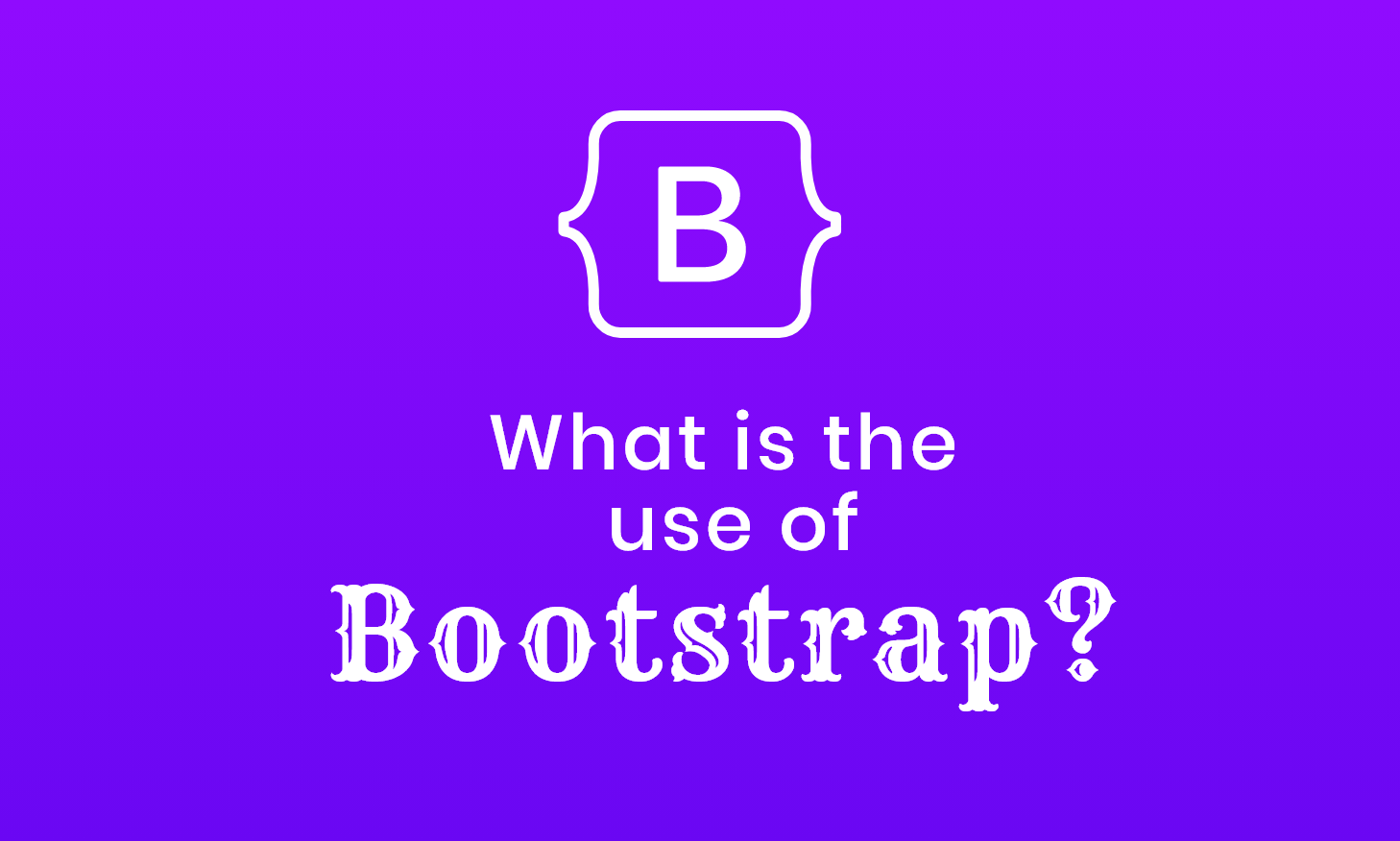
Bootstrap

Definition:-
Bootstrap is a free and open source front end development framework for the creation of websites and web apps.In computers, the word bootstrap means to boot: to load a program into a computer using a much smaller initial program to load in the desired program (which is usually an operating system).
What is the use of Bootstrap?
Bootstrap is an HTML, CSS & JS Library that focuses on simplifying the development of informative web pages (as opposed to web apps).Bootstrap is the most popular CSS Framework for developing responsive and mobile-first websites.The primary purpose of adding it to a web project is to apply Bootstrap's choices of color, size, font and layout to that project.With Bootstrap we can do work easier and faster.
Versions of Bootstrap:-
Bootstrap 2
This version supports Glyphicons, several new components, as well as changes to many of the existing components. This version supports responsive web design, meaning the layout of web pages adjusts dynamically, taking into account the characteristics of the device used (whether desktop, tablet, or mobile phone).
Bootstrap 3
It redesigned components to use flat design and a mobile first approach. Bootstrap 3 new plugin system with namespaced events.
Bootstrap 4
The first alpha version of Bootstrap 4 was released on August 19, 2015.The first beta version was released on August 10, 2017.Bootstrap 4 was finalized on January 18, 2018. Significant changes include:
Bootstrap 4 supports the latest versions of Google Chrome, Firefox, Internet Explorer, Opera, and Safari (except on Windows).
Bootstrap 5
Bootstrap 5 was officially released on May 5, 2021. It’s the latest version of bootstrap 5. Here you can see some changes then other versions of bootstrap.
Features of Bootstrap
Bootstrap has a lot of features. These features not only make it stand out, but they also make it more popular even among those web designers who like to take things in a very conventional way.
- Easy to Begin With
- LESS as Well as CSS Files
- Easily Customizable
- Responsive Utility Classes
- Components of Bootstrap
- Drop-downs
- Button
- Navigation
- Badges Alerts
- Progress Bar
- Drop-Down Component Menu
It is pretty easy, to begin with. Being easy to get started with is probably the first quality which makes Bootstrap very appealing.
Bootstrap not only offers LESS files but also includes the old CSS files.
Despite the fact that Bootstrap is designed in responsive 12-column grids, layouts, and components, it is also very easy to customize. Whether you need a fixed grid or a responsive one, it can be made possible by making a few changes. Offsetting and nesting of columns are also easy to do in both CPU-based and mobile-based browser grids.
Another prominent feature of Bootstrap is its responsive utility classes. Using responsive utility classes, a particular piece of content can be made to appear or hide only on devices depending on the size of the screen being used. This feature is extremely helpful for designers who want to make a mobile and tablet-friendly version of their websites.
Some of the components that come pre-styled in Bootstrap are:
The drop-down component menu is a responsive additive feature of a website. To include it in a website, a lot of different plugins, mostly Java-based, are tested. But, Bootstrap and it's easy customizing options, this can easily be done in a matter of minutes.
Bootstrap Templates
The readily available templates make it easier for inexperienced users to create a website
Simple Integration
Bootstrap can be simply integrated along with distinct other platforms and frameworks, on existing sites and new ones too and one more things you can also utilize particular elements of Bootstrap along with your current CSS.
Pre-styled Components
Bootstrap approaches with pre-styled components for alerts, dropdowns, nav bars, etc.
Bootstrap classes:-
Bootstrap Classes are most commonly used by designers or programmers. It does work easily and Rapidly.There is many classes available for us. Here are some Bootstrap classes:-
- .active.
- .alert.
- .bg-info , bg-warning , bg-success , bg-dark , bg-light.
- btn , btn-group , btn-block , btn-primary etc
- row , col , col-xs , col-sm , col-md , col- lg , col-xl ,col-xxl.
- nav , navbar ,navbar-inverse , navbar-toggler , navbar-collapse.
- container , container-fluid.
- dropdown , dropdown-header , dropdown-menu .
- card , card-body , card-title.
- form , form-control , form-group , form-inline.
- img , img-responsive ,img-circle , img-thumbnail.
Instead of these classes there are many more bootstrap classes. Bootstrap works as a library and It provides us predefined classes.
Conclusion
Bootstrap is becoming the world’s favorite front-end component library. Using Bootstrap, you can easily build responsive, mobile-first projects on the web. You can quickly prototype your unique ideas. You can build an entire application using their Sass variables, powerful plugins, extremely responsive grid system, and a lot more.

 Comments (5)
Comments (5)









